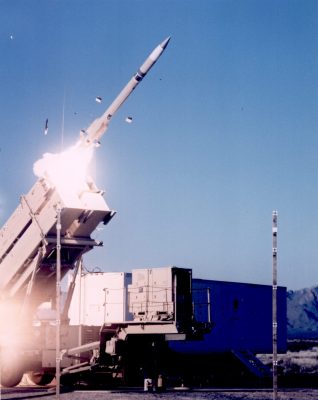 DALLAS. Two Lockheed Martin PAC-3 Cost Reduction Initiative (CRI) interceptors successfully intercepted two tactical ballistic missile targets recently in a test at White Sands Missile Range, New Mexico. The PAC-3 CRI intercepts support the US Army’s Field Surveillance Program (FSP) ensuring the reliability and readiness of fielded PAC-3 missiles. The test also marked the twelfth and thirteenth successful PAC-3 CRI FSP intercepts in seven years.
DALLAS. Two Lockheed Martin PAC-3 Cost Reduction Initiative (CRI) interceptors successfully intercepted two tactical ballistic missile targets recently in a test at White Sands Missile Range, New Mexico. The PAC-3 CRI intercepts support the US Army’s Field Surveillance Program (FSP) ensuring the reliability and readiness of fielded PAC-3 missiles. The test also marked the twelfth and thirteenth successful PAC-3 CRI FSP intercepts in seven years.
The U.S. Army-led missile defense flight test demonstrated the unique Hit-to-Kill capability of the PAC-3 family of missiles which defends against threats through body-to-body contact. The test also reconfirmed PAC-3 CRI’s ability to detect, track and intercept incoming missiles while meeting fielded reliability requirements. The test was observed by representatives from the US Army and current and potential Foreign Military Sales PAC-3 customers.
“PAC-3 continues its long history of reliability and readiness in the field and remains the only combat proven Hit-to-Kill interceptor in the world,” said Jay Pitman, vice president of PAC-3 programs at Lockheed Martin Missiles and Fire Control. “Today’s global security environment demands reliable solutions. We expect PAC-3 interceptors to continue serving as an essential element in integrated, layered defense systems.”
The PAC-3 CRI and MSE are high-velocity interceptors that defend against incoming threats, including tactical ballistic missiles, cruise missiles and aircraft. Fourteen nations have procured the PAC-3 missile defense interceptor: the US, Germany, Kuwait, Japan, Qatar, Republic of Korea, Kingdom of Saudi Arabia, Taiwan, the Netherlands, United Arab Emirates, Romania, Poland, Sweden and Bahrain.







